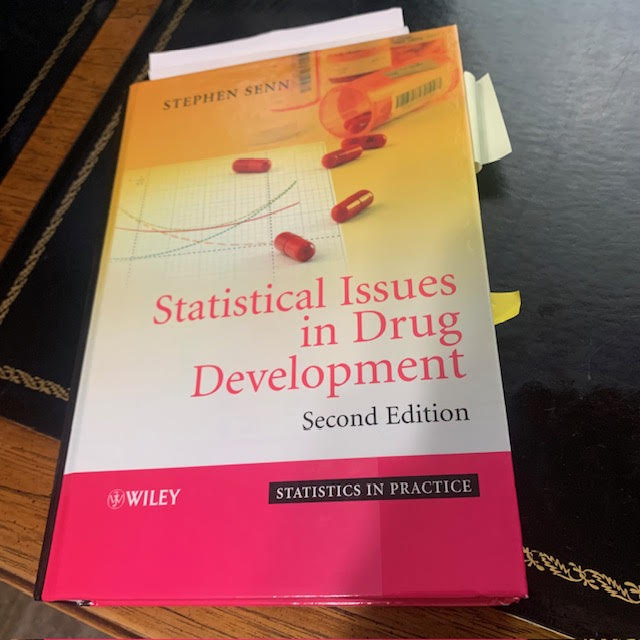I am a clinician from a small country that does not have much local competence or experience in the design or conduct of clinical trails, specifically randomized controlled trials. I intend to build the needed competence and infrastructure here myself as a matter of principle. I am wondering if readers of datamethods could comment on how they feel it would be best to start. I have been working with local statisticians, clinicians and IT professionals in our in-house electronic medical record. We also do have access to individuals with knowledge of regulatory requirements. I have been looking into specific training programs such as University of Oxford’s MSc in Clinical Trials, but I don’t know the quality or if such a university-based approach is the way to go. Any discussion or comments would be very well appreciated.
It’s a great question. I used to know of some outstanding web resources for learning how to do clinical trials. I know that some are available on the NIH website in the US. Also there are some resources listed in an early chapter of BBR.
I have so far found this excellent living textbook on the design, conduct (and everything else) of embedded pragmatic clinical trials from NIH. Thank you for the tip-off!
Any other resources that readers of datamethods could provide or contribute would be much appreciated!
Thank you. Great questions. Please also seek guidance from patient advocates with background in drug testing and evaluation and of course the FDA, the agency charged with protecting the interests of patients. Commonly cited issues is the choice of endpoints (time to event - PFS) that don’t compare impact on quality of life and unreliably predict survival benefit (at least in the cancer setting). Another is the issue of one-size fits all dose-finding studies in phase 1 trials.
For years I have relied on two books, Friedman et al. Fundamentals of Clinical Trials (Springer) and Piantadosi, Clinical Trials: A Methodologic Perspective (Wiley). I see that a new edition of the latter was published earlier this year.
This reference book edited by Piantadosi & Meinert looks promising, with broader coverage than either of those I mentioned, but seems prohibitively expensive: https://link.springer.com/referencework/10.1007/978-3-319-52636-2
-
Carefully read the methods sections, supplements and trial protocols published in journals that you want your articles to appear in. You may be able to generate trial protocols based on those published by those journals. Carefully read the journals you ultimately want to publish in. Get a sense for what they publish and how your work may fit in with their themes. By the time articles are published in these journals, many problems have been addressed, helping you avoid making simple mistakes. If your trial emulates what was published in those journals, there is a good chance that your trial will work out well. Make sure you look at the majors (NEJM, Lancet) given that they invest a huge amount of effort into getting things right. The lower ranked journals articles may have flaws in them that kept them out of the majors.
-
Make sure your trial protocol is perfect before you enroll any patients. Many journals require that you report results as specified in the trial protocol. If you make a mistake early on, it may be hard to recover from them. For frequentist studies, make sure you have a reasonable minimal clinically important difference that has a strong basis (with references) for why it was selected.
-
I find [Resources for COVID-19 Randomized Clinical Trial Design] (https://hbiostat.org/proj/covid19/) extremely useful. I would consider implementing Bayesian adaptive trial designs from the start. Traditional, frequentist trial designs require huge numbers of patients and are expensive to implement. The clinical trial world needs to move away from this approach and into Bayes.
-
A very understandable article showing how Bayes works in trials is: THE WHAT, WHY AND HOW OF BAYESIAN CLINICAL TRIALS MONITORING by Freedman, Spiegelhalter and Parmer. A nice tutorial on adaptive trial designs is: Not Too Big, Not Too Small: A Goldilocks Approach To Sample Size Selection by Broglio, Conner and Berry
-
I am starting a clinical trials program for surgery at UCLA. By using an adaptive trial design for one of the first trials I started, I found after 30 patients that the trial was not going anywhere and could stop it. Had I used a traditional approach, I would have had to enroll hundreds of patients before finding that the trial would not show an effect of the intervention.
-
Part of my motivation for advocating for adaptive designs comes from my many years’ experience as a JAMA editor. We were the journal of negative trials. We saw many trials where huge resources were expendedonly to yield negative results. The major journals were not interested in publishing those studies so they came to JAMA because we were willing to consider publishing negative trials. I felt sorry for these authors because they had put so much effort into the trials and had little to show for it. Even though negative trials are important and their findings disseminated, the majors usually do not want to publish them. Better to do adaptive trials and cut your losses early.
.
Excellent recommendations. Would only add reading @Stephen’s Statistical Issues in Drug Development cover to cover. It is a textbook my trialist mentees consistently find useful, as do I.

Agree! I keep my copy close to where I can easily reach it!
Good luck! Not to discourage you, and obviously it depends on the country, but I’d say we failed to do this in mine.
I did an MSc, written SOPs, publications, international collaborations…etc but the resistance came from authorities you cannot have discussions with.
The experience was really disappointing, but I enjoyed it and learned a lot. Still hopeful though!